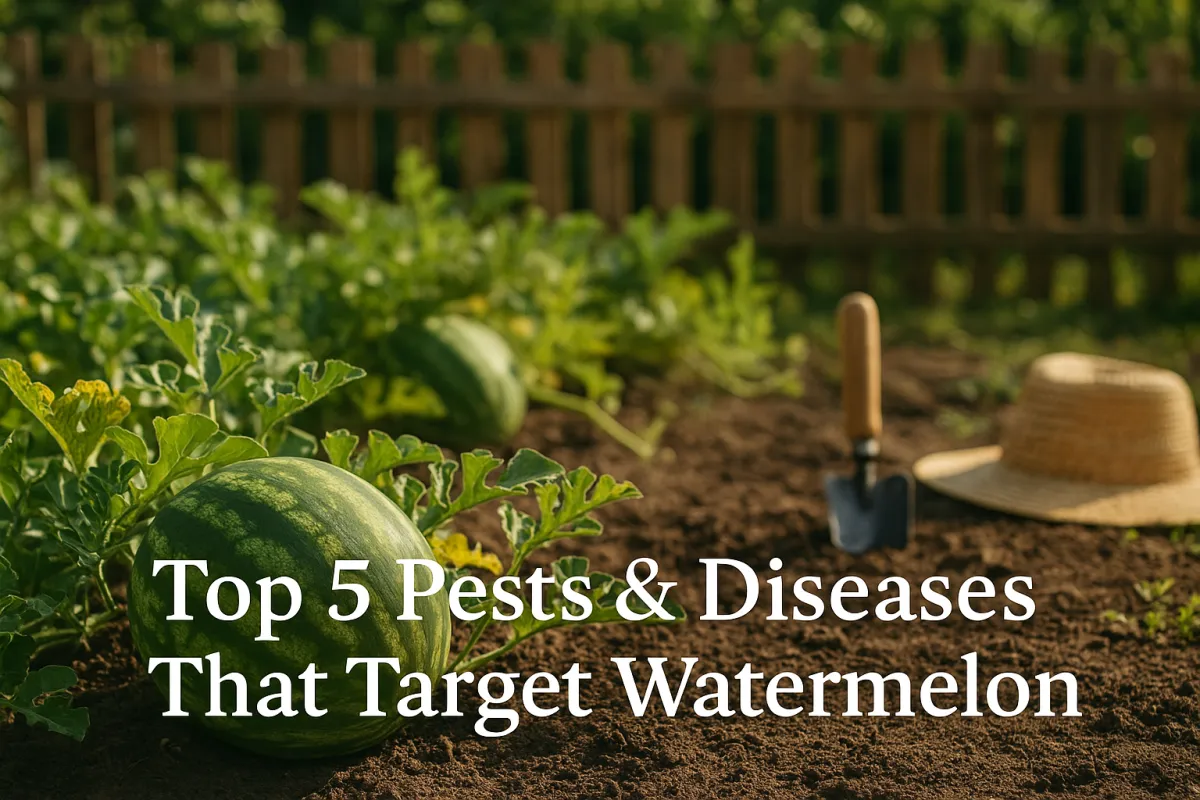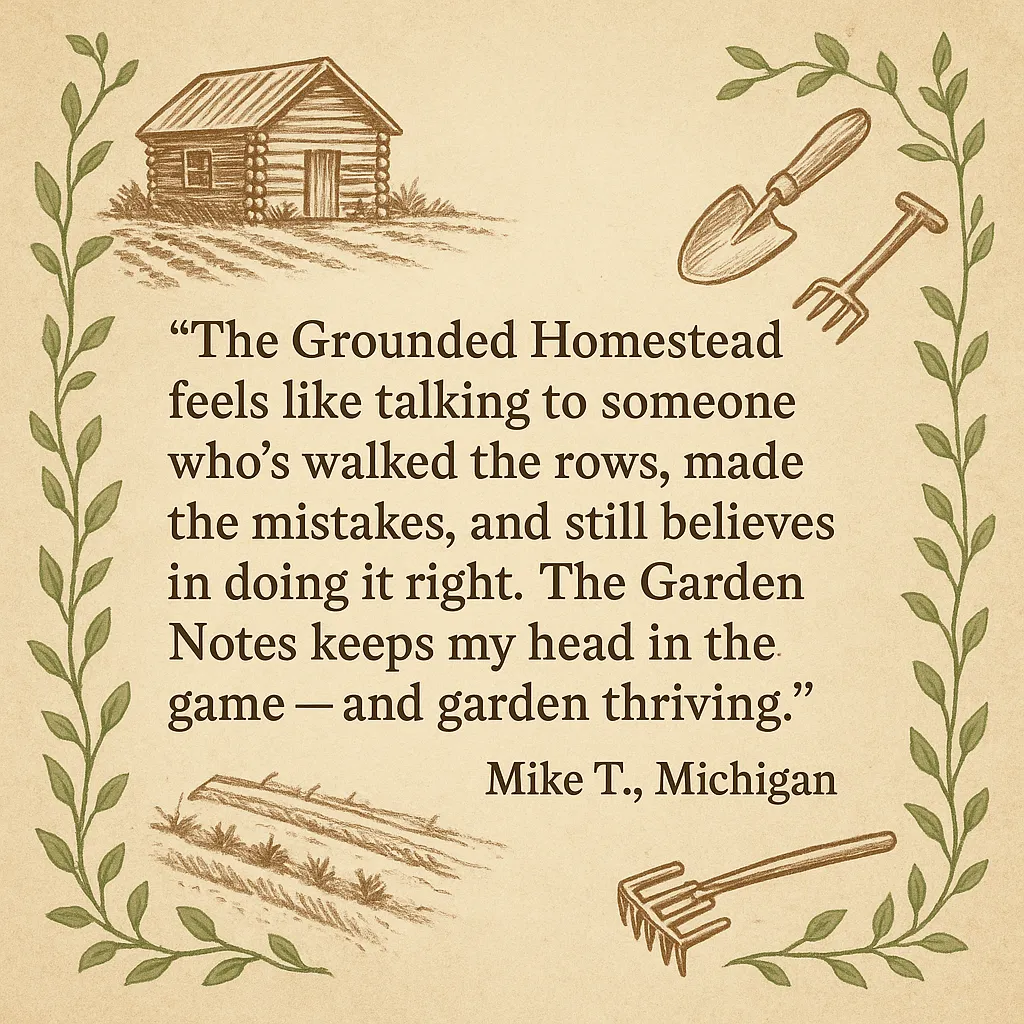
The Top 5 Pests and Diseases That Target Watermelon
The Top 5 Pests and Diseases That Target Watermelon
(And How I Actually Keep Them From Ruining My Patch)
A quick story from my patch
Years ago, I thought watermelon was a “plant and forget it” crop. Toss a few seeds in the ground, give ‘em some water, then wait for sweet, heavy fruit to show up.
That’s how it went the first season. The next year, not so much. I walked out one July morning to find vines wilting like wet string. Leaves were riddled with holes, and a half-dozen melons had sunken brown spots I didn’t see the day before.
Grandma just shook her head and said, “Catch it small, or pay big later.”
I’ve learned that lesson the hard way more than once. If you’re growing watermelons—especially in the heat and humidity of Zones 6 to 10—there are a handful of bugs and diseases just waiting for a weak moment to move in.
This guide isn’t to scare you. It’s to make sure you keep more fruit on the vine, and a lot less stress in your summer.
1. Squash bugs & cucumber beetles
🔍 How to spot them
Squash bugs are flat, shield-shaped, grayish-brown, and hang out under leaves and along stems.
Cucumber beetles are small, yellow with black stripes or spots—almost pretty if they weren’t so destructive.
Early damage looks like tiny ragged holes or stippled leaves. Later, you’ll see whole vines droop as these pests chew through stems and spread bacterial wilt.
📍 Common in Zones 5-10. Dry stretches make them worse because stressed plants can’t bounce back.
🛠 How I keep them in check
Row covers right after planting keep adults from laying eggs. I take them off at flowering so bees can get to the blooms.
Hand picking works—drop them into a bucket of soapy water.
I also plant marigolds and radishes nearby. They confuse the pests and make the patch less appealing.
And always, keep plants fed and evenly watered. A stressed watermelon is a magnet for pests.
👀 Related: My full guide on organic neem & soap sprays for when numbers get out of hand.
Grandma always said: “If your plants look thirsty or hungry, bugs come running. Keep ‘em strong.”
2. Fusarium wilt & anthracnose
🚩 Early warning signs
Fusarium wilt: You’ll see one side of the vine suddenly wilt and die off, even with plenty of water. Cut open the stem and it’s often streaked brown inside.
Anthracnose: Starts as small, round brown spots on leaves that grow and merge. Eventually your fruit gets dark, sunken spots that rot right on the vine.
📍 Most common in Zones 6-11, especially after rainy spells or if you reuse the same melon patch year after year.
🛡 Simple prevention
Rotate crops. Give melons at least 3-4 years before planting in the same spot again.
Buy disease-resistant varieties when possible.
Clean up old vines at season end—don’t compost infected plants.
Always water at the soil level, early in the day, so leaves dry quickly.
Quiet truth: A few leaf spots aren’t the end. It’s catching it early that saves your patch.
3. Aphids & the viruses they bring
🐜 The real threat isn’t the aphids
Tiny green, gray, or black aphids cluster under leaves and around new shoots. They suck sap, sure, but the real problem is the viruses they carry. Mosaic, stunting, leaf curl—they’ll all wreck your harvest quietly.
📍 Found everywhere. Explosive growth happens in cool, mild springs in Zones 5-9.
🧑🌾 What works for me
Healthy soil and steady nutrition means sturdier plants that don’t send out panic signals aphids pick up.
I sometimes use reflective mulch or tin strips early on—the flashes confuse flying aphids.
If I spot clusters, a fast blast of neem oil or insecticidal soap in the cool morning clears them before they settle in.
👀 Related: How I keep aphids off cucumbers & squash — the same tricks work for watermelon.
Grandma says: “Tiny troubles grow big if you give ‘em time. Check under them leaves!”
4. Birds & critters pecking your ripe melons
🐦 Simple solutions
If you’ve ever walked out to find a big bite taken out of your watermelon, you’re not alone. Birds and small critters know exactly when fruit hits peak sugar.
Light netting or floating hoops can be a lifesaver right before harvest.
Cheap fixes like motion sprinklers, shiny pie plates, or reflective tape keep them wary.
If pressure is bad, I pick fruit just before fully ripe and let them finish on a shaded porch.
Faith note: “Stewardship’s more than planting. It’s guarding what’s growing, too.”
5. When to pull sick plants
It’s tough, but sometimes the best way to save a patch is to sacrifice a vine. If you see major wilt, dark lesions climbing the stems, or rapid spread across your rows—pull it.
Bag it up and toss it in the trash. Never compost diseased melon vines. Then keep an eye on neighbors for the next couple weeks.
👀 Related: What to do with damaged or unripe melons so your effort doesn’t go to waste.
✅ Quick reference checklist (free printable)
I made a simple one-pager you can pin in the shed or tack by your garden gate.
Visual pest & disease ID (tiny pics with key signs)
Weekly scouting reminders — look under leaves, check vine bases, test for firm fruit.
Grandma’s saying: “You get what you walk for, not just what you plant.”
👉 Download the checklist here.
🙌 Wrap-up
Keeping watermelons healthy isn’t about constant spraying or fighting fires. It’s about catching problems early, building up your soil, and paying attention.
It might feel like more work up front, but I promise—it’s a whole lot fewer heartbreaks come harvest.
If you want to see exactly what I use (from my favorite lightweight netting to neem concentrate), I keep a running list right here on my resource page.
Stick with it. You’ll get there—and your family’s gonna love those sweet, clean slices straight off the vine.


Facebook
Instagram
X
Youtube